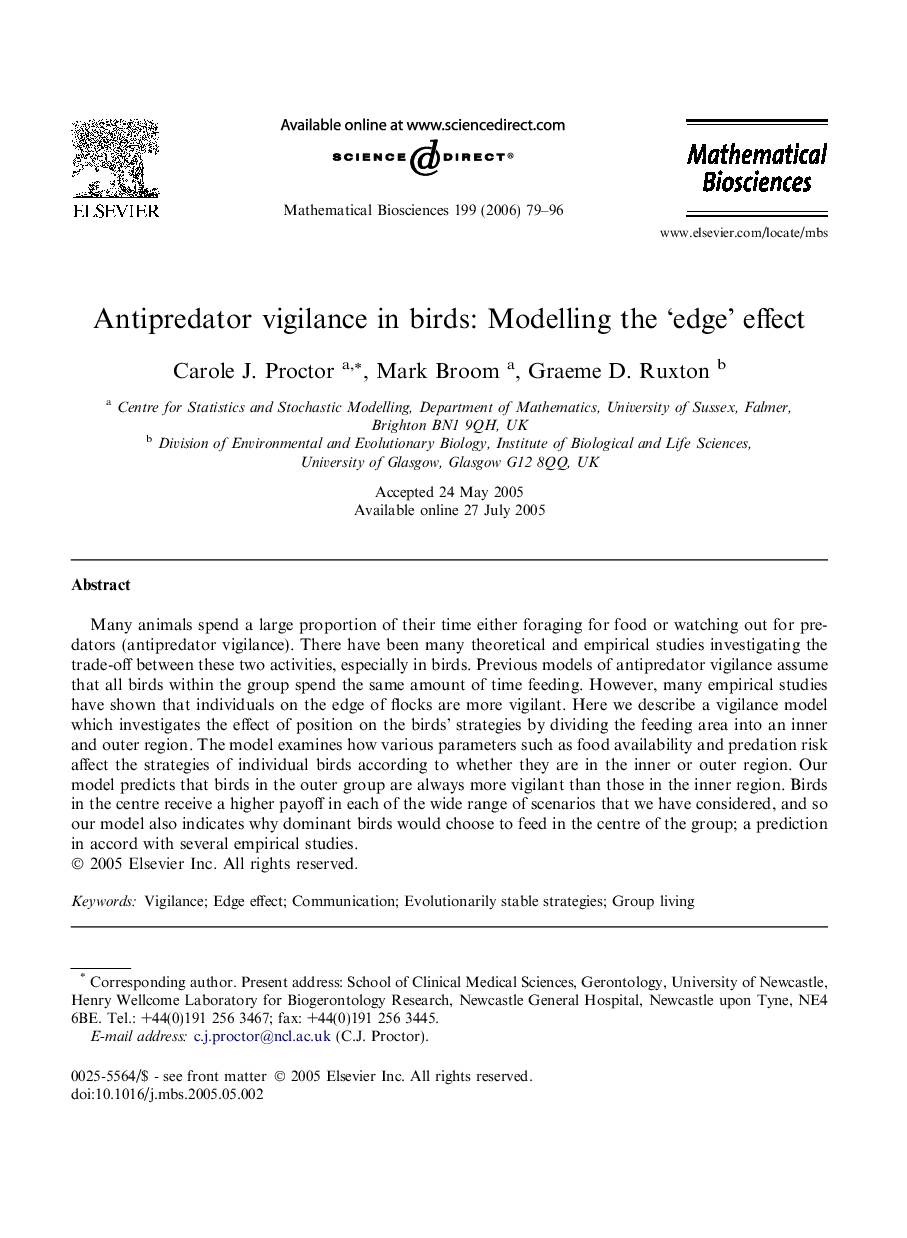| Article ID | Journal | Published Year | Pages | File Type |
|---|---|---|---|---|
| 4501214 | Mathematical Biosciences | 2006 | 18 Pages |
Many animals spend a large proportion of their time either foraging for food or watching out for predators (antipredator vigilance). There have been many theoretical and empirical studies investigating the trade-off between these two activities, especially in birds. Previous models of antipredator vigilance assume that all birds within the group spend the same amount of time feeding. However, many empirical studies have shown that individuals on the edge of flocks are more vigilant. Here we describe a vigilance model which investigates the effect of position on the birds’ strategies by dividing the feeding area into an inner and outer region. The model examines how various parameters such as food availability and predation risk affect the strategies of individual birds according to whether they are in the inner or outer region. Our model predicts that birds in the outer group are always more vigilant than those in the inner region. Birds in the centre receive a higher payoff in each of the wide range of scenarios that we have considered, and so our model also indicates why dominant birds would choose to feed in the centre of the group; a prediction in accord with several empirical studies.
